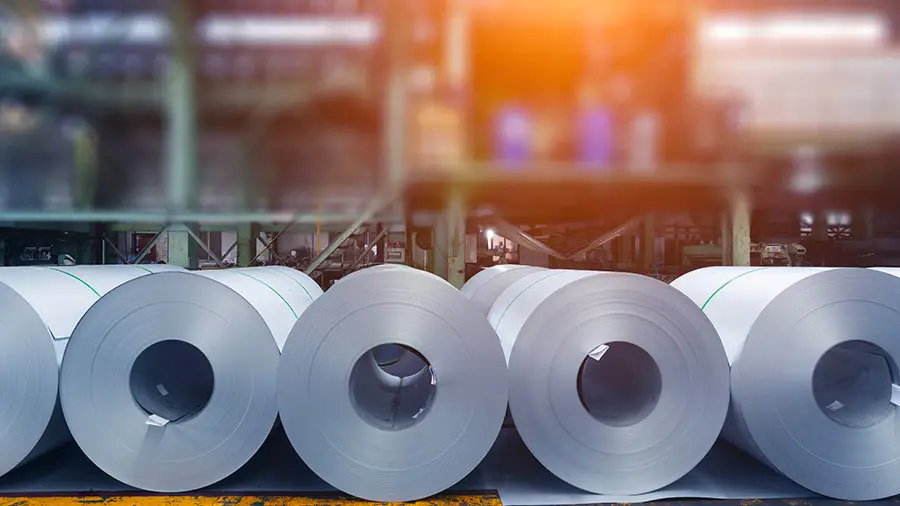US–China trade war: India imposes 12% safeguard duty on certain steel imports amid dumping fears

As the ripple effects of the US-China trade war continue to shape global commerce, India has taken a decisive step to protect its domestic steel industry. The Indian government has announced the imposition of a 12% safeguard duty on select steel imports, aiming to curb the influx of cheaper foreign steel and ensure a level playing field for domestic producers.
This move comes amid growing concerns over steel dumping, where exporters—primarily from China—allegedly sell products at prices significantly lower than market value, disrupting local industries. The newly imposed duty reflects India’s cautious but strategic approach in defending its economic interests without directly escalating geopolitical tensions.
What Prompted This Move?
Over the past several months, Indian steel manufacturers have raised alarms over surging imports of hot-rolled and cold-rolled flat steel products, particularly from countries with excess production capacity. Many of these nations—most notably China—have been redirecting their steel exports to India after facing increased tariffs in the United States and Europe.
Domestic steel producers warned that if the trend continues unchecked, it could cripple India’s steel ecosystem, leading to job losses, reduced capacity utilization, and weakened global competitiveness.
A recent study by the Directorate General of Trade Remedies (DGTR) found that imported steel was indeed being dumped at unfair prices, causing “serious injury” to local producers. Based on this report, the finance ministry approved the temporary safeguard duty.
Scope and Duration of the Duty
The safeguard duty of 12% will be applicable for a limited period of 180 days on certain steel grades. This provisional measure aims to offer immediate relief to Indian producers while allowing authorities to investigate further and determine the need for a longer-term solution.
Officials clarified that the duty won’t apply universally to all steel imports. Instead, it targets products that have been identified as high-risk for dumping. Exemptions will be made for imports from countries with which India has free trade agreements (FTAs), provided they can demonstrate fair pricing practices.
Industry Reactions: Relief and Caution
The Indian steel industry has broadly welcomed the government’s decision. Leading players such as Tata Steel, JSW Steel, and SAIL have expressed relief over the safeguard measure.
“We’ve been operating under immense pressure due to the unfair pricing of dumped steel. This safeguard duty is a crucial lifeline,” said a senior executive at JSW Steel.
However, smaller manufacturers and downstream industries have urged the government to strike a balance. They worry that higher import costs might increase prices for end-users and affect sectors like construction, automobiles, and infrastructure, which rely on affordable steel.
Geopolitical Angle: A Delicate Balancing Act
India’s decision is being closely watched by global observers, particularly in the context of ongoing trade friction between the United States and China. While India has maintained a relatively neutral stance, it continues to take calculated steps to protect its own economic landscape.
The safeguard duty sends a signal that India is willing to assert trade defenses when necessary, especially as global powerhouses reconfigure supply chains and tariff regimes.
Trade analysts believe that India’s move may draw muted criticism from China but is unlikely to provoke a full-scale dispute, particularly since it aligns with WTO guidelines that allow temporary duties in cases of serious domestic injury.
WTO Compatibility and Legal Safeguards
The 12% safeguard duty is in line with WTO rules, which allow member states to implement temporary tariffs to shield domestic industries from sudden surges in imports. The government has emphasized that the decision is based on objective data and a formal investigation, which ensures that it meets international legal standards.
Any extension of the safeguard duty beyond 180 days will require a fresh evaluation and potentially a final ruling by the DGTR.
Way Forward: Structural Reforms Also Needed
While the safeguard duty offers immediate protection, experts warn that long-term competitiveness of the Indian steel industry will require more than just trade barriers. Improving infrastructure, streamlining logistics, boosting research and development, and incentivizing green steel production are vital to ensure India doesn’t just survive but thrives in the global steel market.
“Tariffs are a band-aid, not a cure,” noted trade expert Dr. Raghuram Iyer. “India must also invest in productivity and innovation if it wants to become a steel powerhouse.”
Conclusion
India’s imposition of a 12% safeguard duty on specific steel imports marks a significant policy move in a world increasingly shaped by protectionist tendencies. With a careful mix of assertiveness and regulatory compliance, India is navigating the turbulent waters of global trade while defending the interests of its domestic industries.
As the global economic order continues to evolve amid tensions between major powers like the US and China, India’s steel strategy may well serve as a blueprint for other developing nations seeking to balance free trade with economic sovereignty.






